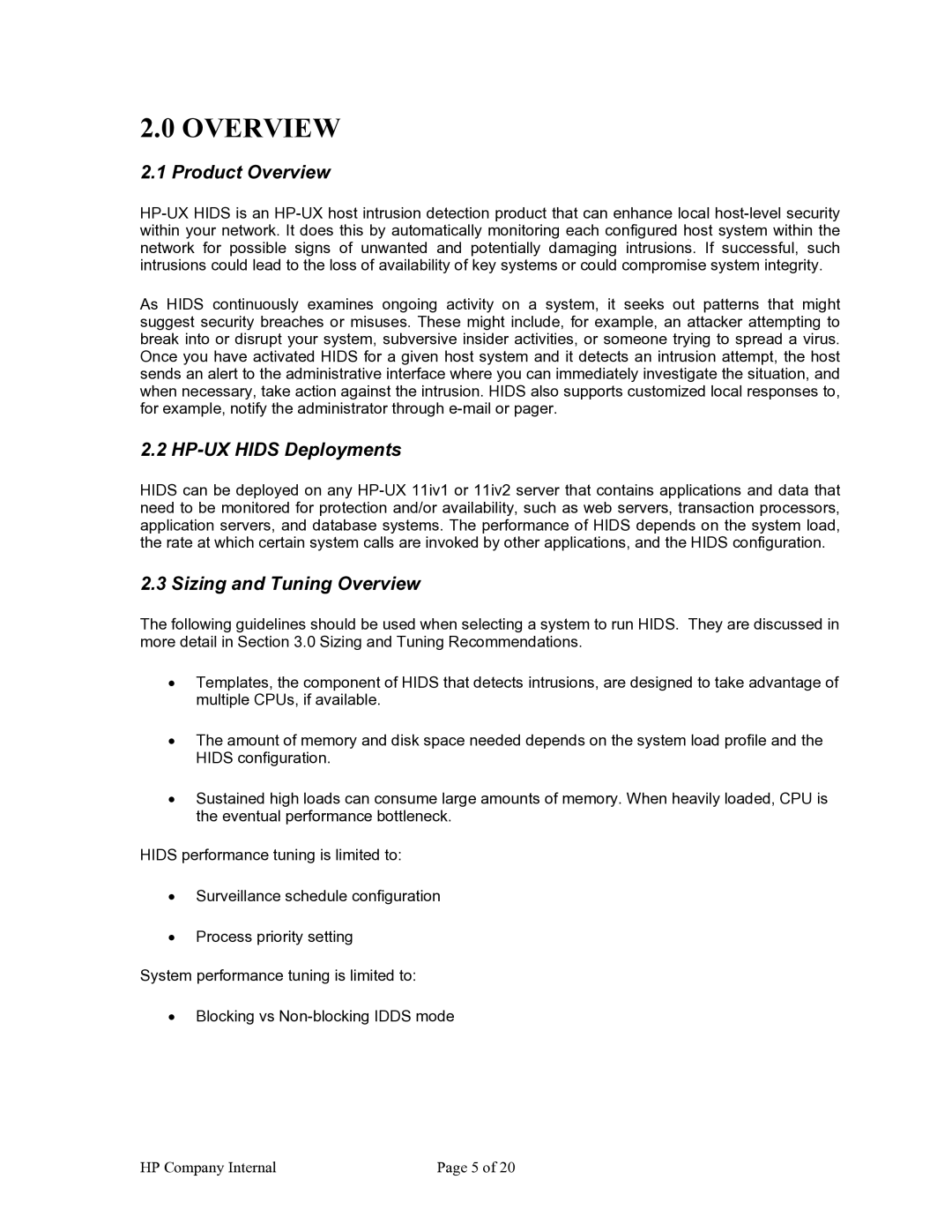2.0OVERVIEW
2.1Product Overview
As HIDS continuously examines ongoing activity on a system, it seeks out patterns that might suggest security breaches or misuses. These might include, for example, an attacker attempting to break into or disrupt your system, subversive insider activities, or someone trying to spread a virus. Once you have activated HIDS for a given host system and it detects an intrusion attempt, the host sends an alert to the administrative interface where you can immediately investigate the situation, and when necessary, take action against the intrusion. HIDS also supports customized local responses to, for example, notify the administrator through
2.2 HP-UX HIDS Deployments
HIDS can be deployed on any
2.3 Sizing and Tuning Overview
The following guidelines should be used when selecting a system to run HIDS. They are discussed in more detail in Section 3.0 Sizing and Tuning Recommendations.
•Templates, the component of HIDS that detects intrusions, are designed to take advantage of multiple CPUs, if available.
•The amount of memory and disk space needed depends on the system load profile and the HIDS configuration.
•Sustained high loads can consume large amounts of memory. When heavily loaded, CPU is the eventual performance bottleneck.
HIDS performance tuning is limited to:
•Surveillance schedule configuration
•Process priority setting
System performance tuning is limited to:
•Blocking vs
HP Company Internal | Page 5 of 20 |
